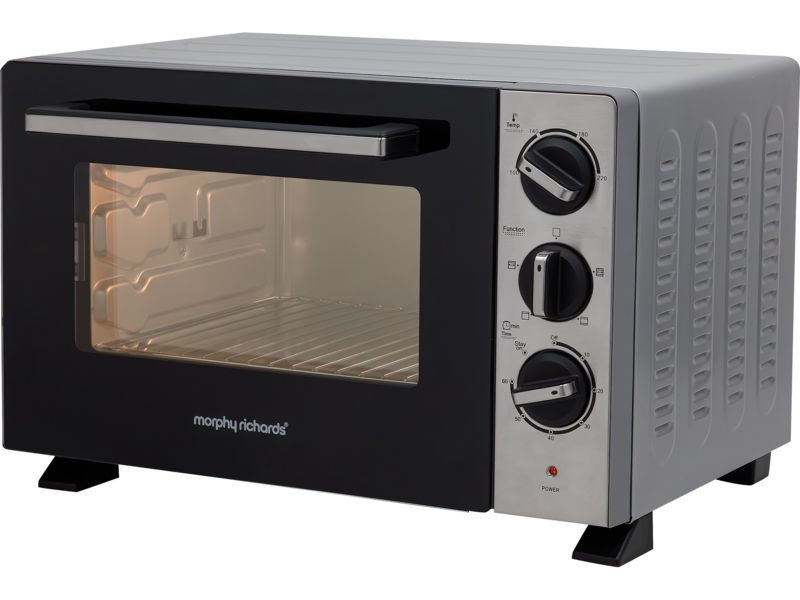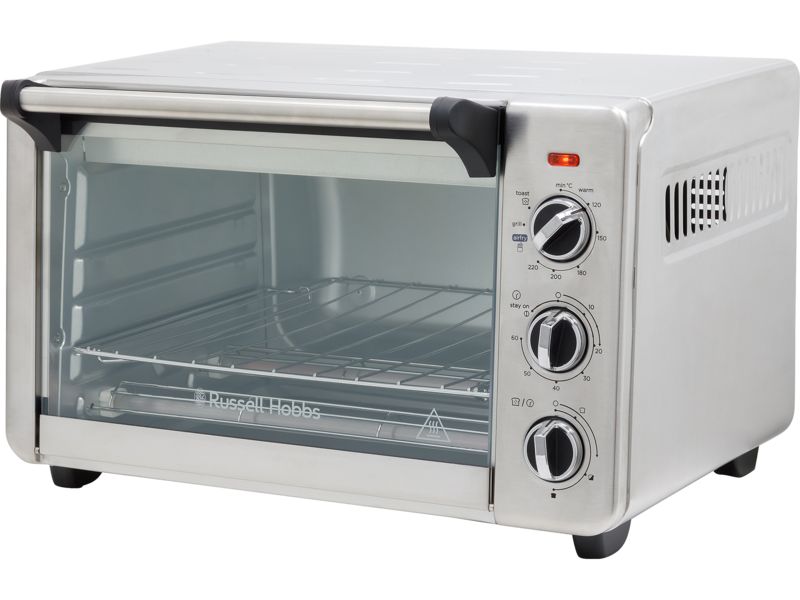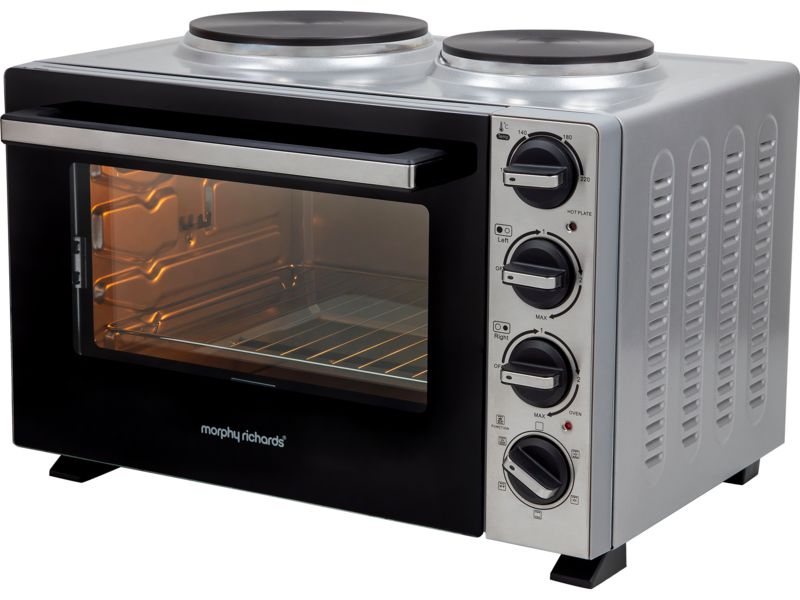How we test mini ovens

Our independent tests reveal whether a mini oven sticks to the temperature you set, how well it distributes heat, and whether its grill and hob will brown and fry your food to perfection.
Unlike free-to-access websites, which typically get the ovens they review free of charge directly from manufacturers or their PR representatives, we buy all the appliances we test ourselves so you can have complete trust in our verdict.
The Which? overall percentage score is calculated purely on the measurements and ratings supplied by our lab, meaning there's no room for unconscious bias when giving an overall rating.
To see our top mini oven recommendations and buying advice, check out our guide to the best mini ovens.
What are Which? Best Buy, Great Value and Don’t Buy mini ovens?

A quick guide to the recommendations you'll see on our reviews.
Best Buy mini ovens
Best Buys are given to the mini ovens that impress most in our tests. A mini oven that scores 68% or more is a Best Buy and comes with a firm overall recommendation, although you should still read our full reviews to check for any weaknesses that might impact your buying decision.
Best Buy mini ovens typically tick the most important boxes: they heat up quickly and accurately, grill effectively, and have good energy efficiency.
Great Value mini ovens
Mini oven prices vary significantly, with some models at the cheaper end available for less than £50, and some premium models costing more than £250.
Great Value mini ovens are at least 20% cheaper than the average mini oven we test, and score 60% or more – so you can be sure you'll be getting a decent product at a decent price.
Look out for Great Value models that also score highly enough to be Best Buys.
Don’t Buy mini ovens
Any mini oven that scores 45% or lower is a Don't Buy that's best avoided.
These models tend to fall down in the most important areas – they're awkward to use, with inaccurate temperature controls and can't reliably bake a cake.
How is the Which? score calculated?
The Which? overall score is a percentage. This score only takes into account the results of our tests and ignores price completely.
This means all the mini ovens are tested on exactly the same scale, so you can compare any mini oven at any price and see how it measures up against its rivals in key areas.
Weightings and star ratings
A Which? overall score is made up of dozens of individual tests and checks, from key factors such as speed of heating up, temperature accuracy and heat distribution to ease of use and what the grill is like. Behind each of those ratings could be more than 20 individual tests and checks.
This means that the most important things – such as how accurately the mini oven maintains the correct temperature and distributes heat – will more greatly impact an oven’s score than whether or not the mini oven has additional features such as a rotisserie spit or loads of automatic programs.
To keep things simple, the most important scores are shown as star ratings out of five on each oven’s Test Results section as an easy-to-compare list of strengths and weaknesses, so you can quickly work out whether a mini oven is right for you.
The full score breakdown is as follows:
- 55% oven performance
- 25% ease of use and cleaning
- 10% grill performance
- 10% energy efficiency
We also test the hobs of mini ovens that have them, and give a star rating for their performance based on how quickly they heat up and how well they distribute heat. This isn't weighted in the final score as to not unfairly disadvantage models without hobs, but is assessed just as thoroughly as the rest of our star ratings.
Read on to find out exactly what goes into each of these scores.
Our key testing criteria
Below are the key mini oven testing categories and how we evaluate each one:
Oven performance
Key question: Does the oven heat up quickly and spread heat evenly?
Everyone varies the temperature at which they use their oven, so our tests check how quickly each mini oven reaches two set temperatures.
We set the mini oven to heat up to 180°C and 200°C. As well as noting the speed at which they reach these temperatures from cold, we then record how closely each oven sticks to the set temperature. Our tests have found mini ovens that veer wildly away from what you would expect – sometimes by more than 40°C. Top-scoring Best Buy mini ovens, however, usually stick closely to the expected temperature.

Next, we bake a tray of shortbread in the oven. This delicate bake clearly shows how effective the mini oven is at spreading heat evenly throughout the oven cavity. Ovens that leave pale parts or burnt corners get marked down in our tests, while those that turn the shortbread an even golden brown across the whole tray get top marks.

Our second baking test involves making a large sponge cake and measuring its vital statistics when it emerges from the oven. If it's well risen and evenly browned, it gets a high score, but flat, sunken or unevenly baked cakes lose points. The image is an example of a well-risen sponge baked in the oven of a Best Buy mini oven.
Key question: How much can you fit into each mini oven?
Manufacturers tend to state a mini oven's capacity in litres, but this includes space you can't actually use for cooking, such as the area under the lowest shelf – so you might find you're getting less cooking space than you bargained for.
We measure the usable space – the height from the top of the lowest shelf to 3cm below the top of the oven – to give you a more realistic understanding of what you'll be able to fit in.
Oven performance accounts for 55% of a mini oven's score.
Ease of use
Key question: Is the mini oven easy to use?
To assess how easy each oven is to use, we look at how clear the markings are on the oven and how straightforward it is to operate the various settings. We load and unload the oven and grill, and assess how easy it is to check on food while it is cooking.
Key question: Is the mini oven easy to clean?
To assess how easy it is to clean each a mini oven, we intentionally create common kitchen messes on various parts – including boil-overs on the hob and baked-on grime in the oven. We then try cleaning them off with common household products, noting things like how difficult it is to access certain nooks and crannies and how easy it is to remove stains and residues.
Ease of use accounts for 25% of a mini oven's score.
Hob performance
Key question: How effective is the mini oven's hob?
Not every mini oven has a hob, but when they do you can be sure we'll test it thoroughly, too. We look at how rapidly each hob will heat up a pan filled with water from 15°C to 90°C. So far, the slowest we've found will keep you waiting for an frustrating 17 minutes before it's ready for you to drop in your pasta.
If you fancy a fry-up on your mini oven's hob, then you'll be interested in our heat-distribution test, where we measure how well heat spreads across the base of a frying pan – the best hobs spread the heat evenly rather than concentrating it in particular spots.
Our final tests involve recording what happens when you power down the hob – some retain heat and will keep cooking your food, while others cool down quickly.
Grill performance
Key question: How evenly does the mini oven's grill brown food?

To see how far and how evenly the grill spreads its heat, we cut the crusts off white bread and cover the mini oven's grill pan with it. A great grill can brown virtually all of the bread, but our tests have found many that struggle to heat more than 50% of the area – and the worst models only toast bread under a certain section of the element.
This means that you would find yourself shifting food around to get anything approaching even browning.
Grill performance makes up 10% of a mini oven's score.
Energy efficiency
Key question: How energy efficient is the mini oven?
As all food is variable, we maintain consistency by heating up a measured batch of chicken nuggets in the main oven at 210°C until their internal temperature reaches 75°C, and measuring the energy it takes to do so. This is then converted into a score and star rating.
Energy efficiency makes up 10% of a mini oven's score.
Find a great mini oven with Which? reviews
We're here to guide you away from inefficient mini ovens that are energy hogs and leave your meals unevenly cooked or burnt. We help you identify the best models that not only excel in space-saving convenience, but that also offer precision heating, energy efficiency, and a seamless cooking experience.
Browse all of our mini oven reviews.


